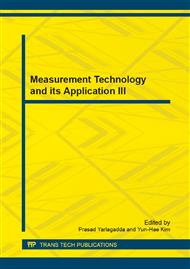p.1196
p.1201
p.1207
p.1213
p.1217
p.1221
p.1227
p.1232
p.1238
Research on Multi-Mode Controller of Switching Power Supply
Abstract:
In order to improve the efficiency of the switching power supply in whole load range, the controller with PWM, PFM and BURST operating modes is designed in this paper, which changes the operation mode automatically according to the load. The operating principle and the advantages and disadvantages of the three operating modes are analyzed and compared. PWM mode is used in heavy load; PFM mode is used in light load to reduce switching losses by reducing the switching frequency and BURST mode is used at the standby time to further reduce switching losses. The main control module is designed and simulation results verify the feasibility of the designed circuit.
Info:
Periodical:
Pages:
1217-1220
Citation:
Online since:
June 2014
Authors:
Keywords:
Price:
Сopyright:
© 2014 Trans Tech Publications Ltd. All Rights Reserved
Share:
Citation:


